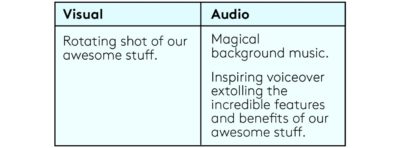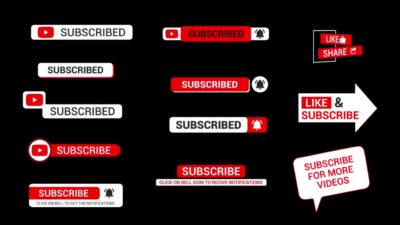7 Easy-to-follow Steps for Writing a Video Marketing Script
Video is a huge part of a successful content marketing strategy, but you can’t just create any old video and expect to see results. The ultimate objective of your marketing video is to communicate a message. Video messaging is a unique blend of visual imagery and spoken dialogue. Along with compelling visuals, your video needs a skillfully worded script. Whether you are writing a screenplay for the next sci-fi thriller or a product explainer video for your marketing team, the script is the foundation of your video.
Learning to craft the perfect video script can be tricky, even for the most experienced video marketer. A well written script can mean the difference between a successful video campaign and one that flops. In this fun, cartoon cut-out video, our script writers at Sparksight share some fun tips for how to write marketing scripts that translate well to video.
After watching the video, let’s get started by taking a look at some of the easy to follow steps it takes to achieve a well-executed script.
Start with an Outline
Expert script writers always have the big picture in mind when writing a marketing script for video. Your video should work to accomplish a specific goal. First, build your framework and begin fleshing out ideas that fit into your script plan. When you initially sit down to write, jot down your big concepts and include any ideas that come to mind during that process. Don’t get into the nitty gritty of the script until you have formed a basic outline of what you want to say. Creating an outline for your script will help you stay on track to meet your video goals by keeping the end in mind.
Nail the Hook
In the first few seconds of your video, you need to grab and hold the attention of the viewer. “Hooks are vital in terms of content videos, and the most successful examples of these lead off with a hook which means the viewer simply cannot afford to navigate away. The most popular form of hook is the question in which you ask the viewer if they have a problem that needs solving. Obviously then, your video will provide the solution to that problem. That compels them to keep watching,” says Constance Obika, a video marketer at EliteAssignmentHelp and StateofWriting. Begin with a great pitch that immediately captures your audience, and build your story on that foundation.
Write a Marketing Script to Match the Visuals
You must think and write visually, and constantly keep in mind how your thoughts on paper will look and sound on the screen. This is critical to successful video scriptwriting. One of the most common ways to approach video scriptwriting is by utilizing two columns on a page. This particular format provides a box on one side to sketch the visual frame and lines on the other side for the video description.
“Words should link clearly to the images that you display… In short, make sure that everything is synchronized and fits” explains Jeanne Holman, a marketing blogger at Australian help and Oxessays. Planning in this way will ensure that your visuals match your messaging. The two-column format serves as your video blueprint as you move forward with your video script writing.
Keep marketing scripts short, simple and relevant
A great marketing video should have a clear message. Be concise and consistent with your language. Let’s face it, most people don’t want to spend more than a few minutes to watch a marketing video. Know that about your audience and keep your video script short, succinct and to the point. Successful videos include only the most relevant information to the viewer. Stay away from flowery, ornate language in your script, which will only distract from your intended message. Concentrate on writing with precision and select your words carefully.
Furthermore, limit on screen text to give the viewer a better experience. This is a screen writing rule “Show, don’t tell” as mentioned in the cardboard puppet video at the top of this page. Often, marketing videos can have way too much on-screen text. Words can really clutter up the screen, taking away from your original intended message. You can still talk about your product or service without showing every single word.
Tell a story
Story-telling uses human emotion as an appeal to captivate and motivate by taking your audience on a journey. The best stories create tension by identifying problems, stretch that tension, and, ultimately, resolve the conflict by offering the solution—which is, of course, your product or service. This basic pattern for building tension and release is the basis for a compelling marketing script. This energy generates dynamic video.
One of the best ways to sustain viewer involvement is by including unexpected elements like humor or little surprises within your script. By catching the audience off guard and keeping your script unique, you are more likely to hold the viewer’s interest. Reversing audience expectations takes your scriptwriting to the next level. Engage your audience by creating mystery and suspense, and don’t forget to offer the reveal close to the end of your script.
Think about Tone and Voice
When scripting your video, think carefully about the tone and voice you would propose using. How does it fit with your brand reputation and character? People never want to dictated to, or patronized, so be careful that the words you use are suitable to your audience. As long as you know your target audience, you can pitch it accordingly, and use competitor examples to assist you.
End with a Call to Action
In order to be effective, your marketing script should end with a call to action that provides the viewer with imperative instructions. YouTubers are notorious for ending a video by saying “Like, comment, subscribe and share!” because the CTA strategy influences what viewers do when the video is over. Explicitly instruct the viewers to visit your website, fill out a form or whatever your video is set to accomplish. Engage with your audience by asking questions and talking directly to them, and encourage responses if your video is to be used on social media. Make it as interactive as possible.
In summary
From beginning to end, keep in mind the ultimate objective you want the project to accomplish—convincing the audience that your brand, product, or service is the one solution that answers the viewer’s need. A well-composed script is the central instrument to a successful video. You are ready. Pick up that pen or pull out that keyboard, and get started writing your next script! Let us know what helps you the most in the comments below.




